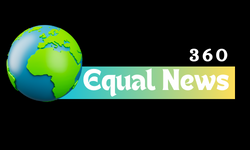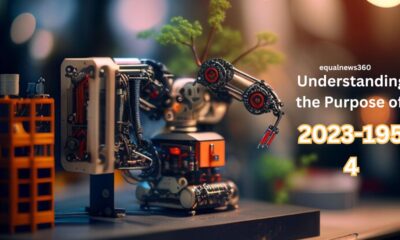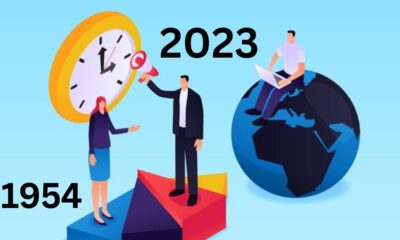NEWS
Exploring the Cultural Shifts: A Comparison of 2023 and 1954
Published
5 months agoon
By
Saad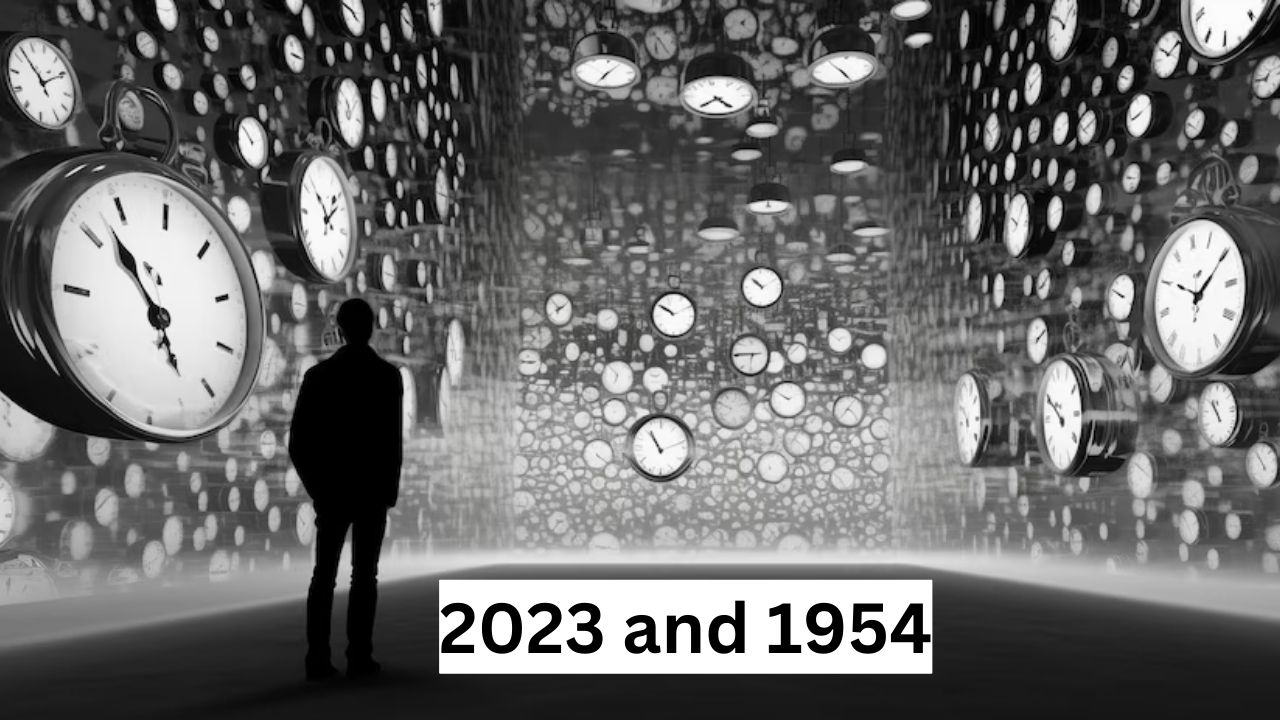
Step into a time machine with us as we embark on a journey to explore the fascinating cultural shifts between 2023 and 1954. From technological marvels to evolving societal norms, join us in unraveling how the world has transformed over the decades. Let’s delve deep into the nuances of change and continuity that have shaped our modern-day society. Get ready for a riveting comparison that will leave you pondering on whether progress has truly been made or if we’ve taken steps backward in certain aspects. Buckle up, it’s going to be an enlightening ride!
Technological Advancements: From Television to Social Media
The evolution of technology has significantly shaped our lives over the years. In 1954, television was a revolutionary invention that brought entertainment and news directly into people’s homes. Families gathered around the TV set, eagerly watching their favorite shows together.
Fast forward to 2023, and we are now immersed in the era of social media. Platforms like Instagram, TikTok, and Twitter have transformed how we connect with others and consume content. The rise of influencers and viral trends dominates online spaces.
Social media allows for instant communication and sharing of information on a global scale. However, it also raises concerns about privacy, mental health, and the spread of misinformation. Despite these challenges, there is no denying the impact social media has had on modern society.
As we continue to navigate this digital landscape, it is essential to strike a balance between embracing technological advancements while being mindful of its implications on our daily lives.
Changing Ideals of Beauty and Body Image
In 1954, the ideal beauty standards were often portrayed as curvaceous and feminine, reflecting a more traditional outlook on beauty. Women were expected to have an hourglass figure with soft features and demure expressions.
Fast forward to 2023, the definition of beauty has evolved significantly. Diversity is now celebrated, embracing all body types, skin colors, and gender identities. The emphasis is on self-love and acceptance rather than conforming to rigid societal norms.
Social media plays a pivotal role in shaping modern beauty ideals, with influencers promoting authenticity and realness over perfection. Body positivity movements have gained momentum, encouraging individuals to embrace their uniqueness without feeling pressured to fit conventional standards.
The dialogue around body image has shifted towards inclusivity and empowerment. Beauty is now seen as multifaceted, encompassing inner strength, confidence, and individuality. It’s about celebrating what makes each person uniquely beautiful in their own way.
Gender Roles and Expectations
Gender roles and expectations have undergone significant changes since 1954. Back then, traditional gender norms dictated strict boundaries for men and women’s behavior. Women were expected to stay home, tend to household chores, and raise children while men were the primary breadwinners.
Fast forward to 2023, these rigid stereotypes have been challenged and redefined. Today, we see a more fluid understanding of gender with increasing acceptance of diverse identities beyond the binary constructs of male and female.
In media and pop culture, there is a growing representation of non-binary individuals challenging the conventional notions of masculinity and femininity. This shift has paved the way for more inclusive narratives that celebrate individuality regardless of gender expression.
However, despite progress in breaking down traditional gender roles, society still grapples with deeply ingrained biases that perpetuate inequality in various spheres like politics, workplaces, and relationships. There is an ongoing conversation about dismantling systemic barriers that limit opportunities based on one’s gender identity.
As we continue to navigate this evolving landscape of gender roles and expectations, it becomes crucial to foster a culture of respect and equality where everyone has the freedom to express themselves authentically without fear or judgment.
Diversity and Inclusivity in Media Representation
In the realm of media representation, a notable shift has occurred between 2023 and 1954. Back in the ’50s, diversity and inclusivity were not at the forefront of content creation. Television shows predominantly featured homogeneous casts, often lacking representation from marginalized groups. Fast forward to today, and we witness a much-needed transformation.
Nowadays, there is a growing emphasis on showcasing diverse characters with varying backgrounds and identities. This shift towards inclusivity has led to more authentic storytelling that resonates with audiences worldwide. From highlighting LGBTQ+ stories to portraying individuals with disabilities, media platforms are striving to represent society’s rich tapestry accurately.
By incorporating diverse perspectives into narratives, creators have opened up new avenues for meaningful discussions on important social issues. Viewers are exposed to different cultures, experiences, and viewpoints that challenge stereotypes and broaden their understanding of the world around them.
This evolution towards greater diversity in media representation marks a positive step forward in fostering empathy, understanding, and acceptance within society at large.
Work Culture and Employment Opportunities
In the realm of work culture and employment opportunities, a stark contrast emerges when comparing 2023 to 1954. Back in 1954, traditional office settings with strict hierarchies were the norm, whereas today, remote work and flexible schedules have revolutionized how we approach work. The rise of gig economy platforms has also opened up new avenues for freelancers and independent contractors to thrive in their respective fields.
Moreover, diversity and inclusion initiatives are gaining momentum in workplaces today, fostering a more inclusive environment where individuals from all backgrounds feel valued and supported. In 1954, such efforts were virtually nonexistent, reflecting a shift towards greater equality and representation in modern times.
Additionally, technological advancements have transformed the way we work – from using typewriters to sophisticated software programs that streamline processes and enhance productivity. This digital evolution has paved the way for remote collaboration on a global scale like never before seen in 1954.
The landscape of work culture and employment opportunities has evolved significantly over the decades, embracing innovation and inclusivity to create more dynamic and fulfilling professional experiences for individuals across various industries.
Education System and Access to Information
In the realm of education and information access, the disparities between 2023 and 1954 are striking. Back in 1954, resources were limited, with libraries being a primary source of knowledge. Fast forward to today, where the internet provides a wealth of information at our fingertips.
Education systems have evolved to incorporate technology into learning processes. Virtual classrooms and online resources have revolutionized how students engage with course material. The ability to research and learn outside traditional classroom settings has opened doors for self-directed education.
With the rise of e-learning platforms and digital libraries, individuals now have unprecedented access to educational materials regardless of their location or financial status. This shift has democratized learning opportunities, empowering people from diverse backgrounds to pursue knowledge on their terms.
The landscape of education continues to transform as technology advances further. The key lies in leveraging these tools to enhance accessibility and quality of education for all learners.
Impact on Society and Relationships
Society and relationships have undergone significant transformations from 1954 to 2023. In the past, traditional values often dictated societal norms and relationship dynamics. As time progressed, these rigid structures began to loosen their grip, allowing for more diverse expressions of love and connection.
In today’s society, individuals have more freedom to define their relationships on their own terms. Non-traditional partnerships are more widely accepted than ever before, challenging outdated notions of what constitutes a “normal” relationship. This shift has led to increased inclusivity and acceptance within communities.
Moreover, advancements in technology have revolutionized how people communicate and interact with one another. Social media platforms have connected individuals across the globe, fostering new forms of relationships that transcend physical boundaries.
The impact of these societal changes on relationships is complex and multifaceted. While some may argue that traditional values are eroding, others see it as an opportunity for greater authenticity and connection in modern relationships. The key lies in embracing diversity and evolving with the times to create healthier, more fulfilling connections in a rapidly changing world.
Reflections on the Shifts: Progress or Regression?
As we delve into the cultural shifts between 2023 and 1954, it’s essential to ponder on whether these changes signify progress or regression. The evolution of technology has undeniably brought convenience, yet it also raises concerns about privacy and digital dependency.
In terms of beauty standards and body image, there seems to be a move towards embracing diversity and authenticity. However, the prevalence of unrealistic beauty ideals on social media can still perpetuate insecurity among individuals.
Gender roles have seen significant transformations over the years, with more emphasis on gender equality and inclusivity. Yet, societal expectations continue to influence perceptions of masculinity and femininity in subtle ways.
The increased representation of diverse communities in media is undoubtedly a step forward towards fostering inclusivity. Nevertheless, stereotypes and biases still persist within mainstream narratives.
Work culture has shifted towards flexibility and remote opportunities but has also blurred boundaries between work-life balance for many individuals. Education systems have become more accessible with online resources; however, misinformation poses a new challenge in today’s information age.
Society’s dynamics are continually evolving as relationships navigate through the complexities brought by modernization. It’s crucial to critically analyze these shifts to understand their implications fully without overlooking both their positive advancements and potential setbacks.
Conclusion
As we compare the cultural shifts between 2023 and 1954, it becomes evident that society has undergone significant transformations in various aspects. From technological advancements to changing ideals of beauty, gender roles, diversity in media representation, work culture, education systems, and impacts on society and relationships – the evolution is profound.
While some may argue that progress has been made in terms of inclusivity and access to information, others may view certain changes as a regression. It is crucial for us to continue reflecting on these shifts critically and thoughtfully. By understanding where we have come from and where we are heading, we can strive towards building a more equitable and inclusive future for all.
The comparison serves as a reminder of how far we have come but also highlights the areas where there is still room for improvement. As we navigate through these cultural shifts, let us remember to embrace diversity, challenge stereotypes, promote equality, and foster empathy towards one another. Only then can we truly create a more harmonious society for generations to come.
Hi, I am Saad Qureshi and I am working since 2017 in this field with 5 years of experience in SEO and Guest posting. My range of services includes Article Posting on Authority Sites.
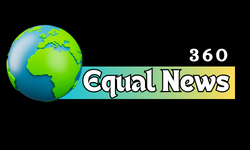
NEWS
Why Fiskning is the Ultimate Outdoor Adventure Activity
Published
2 months agoon
May 27, 2024By
Saad
Here in the exciting realm of Fiskning, excitement, and peace of mind coexist in the wide outdoors. The best outdoor activity if you want to mix adrenaline and leisure is Fiskning. Come explore with us the background, advantages, must-have gear, top travel spots, safety advice, and how Fiskning can change your outdoor adventures. Prepare to fully experience fishing as never before!
Fiskning History and Origins
Are you curious about the background and beginnings of Fiskning, the ultimate outdoor adventure sport? Fiskning has its origins in prehistoric Scandinavian societies where fishing was a way of life as much as a source of food.
Fishing became deeply embedded in the culture in these rough regions surrounded by magnificent fjords and glistening waterways as a means of sustaining communities and fostering a connection with nature. Fiskning became a popular past leisure for people of all ages worldwide as it developed from a simple survival technique.
Fiskning is not only a skill, patience, and enjoyment of nature activity; it is also a cultural legacy that should be preserved. As they throw their hooks into calm lakes or raging rivers in quest of that ideal catch, fans of the sport still appreciate the spirit of Fiskning today.
Advantages of Fishing for Mental and Physical Health
The best kind of outdoor adventure sport, fiskning has several advantages for mental and physical health. Fishing in and of itself calls for patience, concentration, and accuracy—qualities that might enhance cognitive performance and lower stress. Practicing Fiskning in the great outdoors helps people to unplug from the daily grind and cultivate mindfulness and calm.
Physically, Fiskning is a terrific approach to keeping active without seeming like you’re working out. A great full-body workout could be had by reeling in a large catch or stumbling across rugged terrain to find the ideal location. Outside time also exposes you to natural sunlight, which raises vitamin D levels and enhances happiness.
Fishing is about interacting with nature, pushing yourself both physically and emotionally, and enjoying the many health advantages that come with this fulfilling outdoor pursuit. It’s not only about catching fish.
Standard Fiskning Gear and Equipment
Equipping for a Fiskning excursion requires the proper gear to be effective and pleasurable.
A reliable fishing rod is a must; more experienced fishermen can choose from lighter spinning rods for novices to more specialist fly fishing rods. Match the specifications of the rod with a dependable reel.
Not to be overlooked is your line; select one that works for the kind of fish you want to catch and the conditions you will be in. Depending on your favorite fishing style, a range of lures or bait will also come in useful.
Must-have additional equipment includes hooks, sinkers, bobbers, and a tackle box to keep everything in order. Not to mention polarized sunglasses to shield your eyes and lessen glare off the water while you search for underwater movement.
Just as crucial to your kit list are comfortable clothes appropriate for the weather and sturdy shoes that can manage a variety of terrains.
Top Fishing Spots Worldwide
Set out on an exhilarating fishing journey and see some of the most stunning locations on Earth to land your biggest catch.
Beautiful fjords and glistening clean seas brimming with fish just ready to be hooked may be found in Scandinavia in nations like Sweden and Norway. Unforgettable fishing experiences are perfectly framed by the stunning scenery.
For those who long for a tropical getaway, travel to Australia or Costa Rica to go fishing in the warm sun amongst fascinating marine life and verdant surroundings. These places’ brilliant hues will make your fishing trip even more exciting.
If you enjoy your fishing and culture mixed, the coastal areas of Japan are perfect for fishermen who want to experience traditional Japanese culture while attempting to catch native species like mackerel and tuna.
Anyplace you decide to throw your line has its special appeal and promises to be an unforgettable fishing experience that will make you want more.
Guide to Safe Fishing
Safety has to be the first concern whenever you go on a Fiskning trip. Look up the water and weather predictions before leaving. To avoid slipping on damp surfaces, dress for the weather and wear appropriate, well-grip shoes.
Remember to pack life jackets and first aid kits among other necessary safety equipment. In case of emergency, it’s also critical to let someone know where you fish and when you anticipate returning.
Even if fisking can be a thrilling sport, you should always be mindful of your surroundings. When working with sharp equipment and hooks, especially around kids or novice fishermen, use caution.
Assure a sustainable experience for the environment and yourself by adhering to local fishing laws and regulations. You may thoroughly enjoy this outdoor experience with peace of mind if you give safety precautions priority when planning your Fiskning excursion.
Finally, how fiskning may be a transformative experience
Fishing is a life-changing event that goes beyond simple leisure. The excitement of landing your first fish and the tranquility of being outdoors provides a special chance to establish a connection with the environment and oneself.
Fiskning offers plenty to offer everyone, whatever of your interests—adventure, leisure, or just some time away from daily life. Try your hand at Fiskning the next time you’re seeking a new outdoor experience; you never know, it might well transform your life.
NEWS
DIY Vs. Professional Water Damage Restoration: Pros and Cons
Published
5 months agoon
March 5, 2024By
Saad
Water damage restoration isn’t as straightforward as it might seem. It involves more than wiping up a few puddles; it requires proper inspection, thorough drying, and sometimes even reconstruction.
Taking on such a project without professional help might save you money upfront but can also lead to long-term issues. Analyzing the benefits and drawbacks of doing your water damage repair is crucial.
Cost
Professionals offer expertise and advanced equipment, allowing them to tackle water damage more thoroughly than homeowners could. This may come at a higher upfront cost, but it can save you money in the long run by reducing future problems like mold growth and structural damage.
Homeowners on a tight budget may find DIY restoration appealing due to its potential cost savings. However, it’s essential to consider all the costs associated with attempting DIY repairs, including time, energy, and risks.
Taking on a DIY restoration project can be a great learning opportunity for homeowners looking to improve their skills. Plus, it’s a chance to take personal pride in their work. But be aware that it’s also a very time-consuming process. Many people are busy, and tackling water damage restoration in the middle of a hectic lifestyle can be challenging. For example, homeowners may work on the project during weekends or after work.
Safety
Many homeowners try DIY projects to save money. In some situations, this makes sense. However, skipping professional water damage restoration Denver services can be more trouble than it’s worth in water damage restoration.
Water damage repair is a complicated process that includes water extraction, thorough drying and dehumidification, meticulous cleaning, and even mold removal. Inexperienced homeowners may make mistakes that lead to additional issues, such as structural damage and mold growth.
It’s also important to consider personal safety when deciding on a DIY project. If you’re dealing with contaminated water (often called “black water”), it may be hazardous to your health. Removing water-logged carpets and other materials can be physically challenging and stressful. DIYers often don’t wear proper safety equipment, and the job can be dangerous even with appropriate gear. I’ve seen countless well-intentioned DIYers get hurt trying to rip out wet carpets or pry up damaged drywall. They can end up with costly injuries and a home that’s less safe for their family.
Time
Water damage can have profound implications if not addressed fast, including structural damage to your property, mold growth, and pricey repairs. When faced with water damage, homeowners may do DIY restoration or hire professional services. Here are some pros and cons to help you decide which option is best for your situation.
Pros: DIY can be cost-effective, especially for minor issues like leaky pipes or spills. It’s also a great way to learn skills and get involved in your home’s maintenance. It can be a rewarding experience, and you will feel a sense of accomplishment once the project is complete.
Cons: It can be very time-consuming to restore your home yourself. Tearing down drywall, removing wet carpet, and using fans and dehumidifiers to extract moisture are labor-intensive tasks. It can take days or even weeks to dry a space completely. This can be inconvenient if you have a busy schedule.
Experience
Homeowners often turn to DIY water damage restoration to save money, but it isn’t easy without experience. Inexperience can lead to missed areas of damage, improper drying techniques, and potential structural problems. These mistakes can cost homeowners much more than their initial out-of-pocket costs; they could also drive up the price of future insurance premiums or long-term repair bills.
Whether to attempt DIY restoration or call in professionals depends on various factors, including the extent of the damage, health and safety concerns, insurance coverage, time constraints, and budget considerations. A DIY approach may be worth the savings for minor water damage within your capabilities. However, hiring a professional service is often safer and more cost-effective for larger-scale or contaminated water damage.
NEWS
A Winter Weather Advisory Issued for northern Minnesota and Northwest Wisconsin.
Published
5 months agoon
March 4, 2024By
Saad
Brrr! Brace yourselves, folks in Northern Minnesota and Northwest Wisconsin – winter is here with a vengeance! A winter weather advisory has been issued, heralding the arrival of snow, ice, and bone-chilling temperatures. It’s time to grab your mittens, stock up on hot cocoa, and hunker down for some serious cold weather ahead. Let’s dive into what this advisory means for you and how to stay safe during the frosty days to come.
What caused the advisory to be issued?
As the temperatures drop and the winds pick up, residents of northern Minnesota and northwest Wisconsin are bracing themselves for a winter weather advisory. The primary cause behind this advisory is an approaching low-pressure system from the west that is expected to bring heavy snowfall and gusty winds to the region. This potent combination can create hazardous conditions on roads, leading to reduced visibility and slippery surfaces.
The National Weather Service has issued this advisory to alert residents of the potential dangers posed by this incoming winter storm. With significant snow accumulation predicted, it’s crucial for people in these areas to take precautions and prepare accordingly. Schools may be closed, travel could be disrupted, and power outages might occur due to downed trees or power lines under the weight of heavy snow.
By staying informed through local news updates and official weather alerts, individuals can stay ahead of any developments as they unfold during this winter weather event. It’s essential for everyone in the affected areas to heed safety recommendations from authorities so that they can navigate through these challenging conditions with caution and awareness.
What areas are affected by the advisory?
As the winter weather advisory sweeps across northern Minnesota and northwest Wisconsin, several areas are expected to be impacted by this upcoming storm. Residents in cities like Duluth, Superior, Grand Marais, and Ashland should prepare for potentially hazardous conditions.
The advisory covers a wide area from the shores of Lake Superior to the inland regions near the Canadian border. Even smaller towns and rural communities in these regions may experience heavy snowfall, strong winds, and freezing temperatures.
Roads and highways in these areas could become treacherous as snow accumulates quickly, reducing visibility and creating slippery driving conditions. Travelers are urged to stay updated on road closures and travel advisories issued by local authorities.
Residents living in these affected areas should stock up on essential supplies like food, water, batteries, blankets, and any necessary medications ahead of the storm. It’s crucial to have a plan in place for power outages or emergencies during severe winter weather events.
Expected weather conditions and potential hazards
The upcoming winter weather in northern Minnesota and northwest Wisconsin is forecasted to bring heavy snowfall, strong winds, and low visibility. These conditions can create hazardous driving conditions, leading to accidents and road closures. Additionally, the weight of the snow accumulation on roofs can pose a risk of collapse.
Residents in the affected areas should prepare for possible power outages due to downed power lines or trees weighed down by snow. It’s essential to have emergency supplies like food, water, blankets, and flashlights readily available in case you lose electricity.
Travel should be limited during this time to reduce the risk of getting stranded on the roads. If you must go out, make sure your vehicle is equipped with winter tires, chains if needed, and an emergency kit.
Stay informed about updated weather forecasts and advisories from local authorities to ensure your safety during this winter storm warning period. Your well-being is a top priority when facing these potential hazards brought on by severe winter weather conditions.
Tips for preparing for winter weather
As winter weather approaches, it’s essential to be prepared for whatever nature may throw your way. Start by checking your heating system to ensure it’s in good working condition. Stock up on supplies like extra blankets, non-perishable food, and water in case of power outages. Don’t forget to have a flashlight with fresh batteries handy.
Make sure your vehicle is equipped with essentials like an ice scraper, shovel, sand or kitty litter for traction, and a fully charged phone in case you need help while driving in snowy conditions. Consider investing in snow tires or chains for added safety on the road.
Keep an emergency kit at home with first aid supplies, medications, and important documents stored in a waterproof container. Stay informed about weather updates and advisories by tuning into local news stations or signing up for alerts on your phone. By taking these proactive steps, you can stay safe and prepared during the winter season.
What to do during a winter storm
When a winter storm hits, it’s important to stay indoors if possible. Keep your home warm by sealing any drafts and using extra blankets or layers of clothing. Make sure you have enough food, water, and medications to last a few days in case of power outages.
If you must go outside, dress warmly in layers and cover exposed skin to prevent frostbite. Use caution when walking on icy sidewalks or roads – wear appropriate footwear with good traction. Drive only if absolutely necessary, and make sure your vehicle is equipped with emergency supplies like a shovel, kitty litter for traction, and a fully charged phone.
Stay informed about weather updates through local news sources or weather apps on your phone. If you lose power, avoid using candles as they pose a fire hazard; opt for flashlights instead. Check on neighbors who may need assistance during the storm – community support is essential during challenging conditions like these.
Conclusion: Stay safe and informed during winter weather advisories
Stay safe and informed during winter weather advisories. Remember to stay updated on the latest weather forecasts, travel warnings, and road conditions. Prepare your home and vehicle for inclement weather by stocking up on supplies like food, water, blankets, and a flashlight. Follow safety guidelines if you must travel during a winter storm, such as driving slowly and keeping a safe distance from other vehicles.
By staying vigilant and taking precautions, you can protect yourself and your loved ones during severe winter weather conditions in Northern Minnesota and Northwest Wisconsin. Stay warm, stay safe!
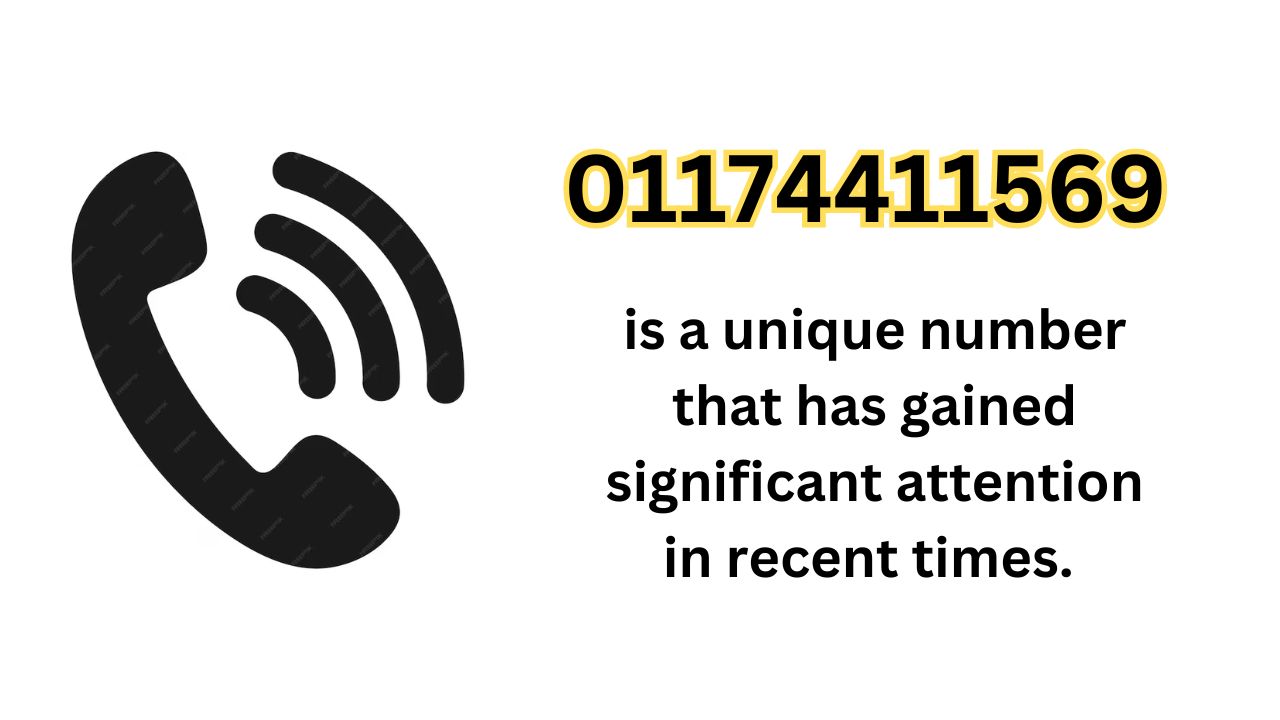
01174411569 is a unique number that has gained significant attention in recent times. It is not just a number; it represents a revolutionary concept that is reshaping the way we think about communication and connectivity.
History and Origin
The history of 01174411569 can be traced back to [insert year], when [company name] first introduced this concept to the public. Since then, it has evolved into a powerful tool that is used by millions of people around the world.
Benefits of 01174411569
There are several benefits to using 01174411569. One of the key benefits is its ability to [insert benefit]. Additionally, 01174411569 is [insert another benefit].
How Does 01174411569 Work?
01174411569 works by [explain how it works]. This process ensures that users can [explain user benefits].
Use Cases of 01174411569
01174411569 has a wide range of use cases. For example, it can be used for [insert use case]. Additionally, it is also used in [insert another use case].
Comparison with Other Solutions
When compared to other solutions, 01174411569 stands out because of [explain unique selling points].
Future of 01174411569
The future of 01174411569 looks promising, with [explain future prospects].
How to Get 01174411569
To get 01174411569, [explain how to obtain it]. This process is simple and straightforward, ensuring that anyone can [obtain it].
Conclusion
In conclusion, 01174411569 is a revolutionary concept that is changing the way we communicate. With its [list key benefits], it is clear that 01174411569 is here to stay.
FAQs
- Question: What is the cost of 01174411569?
- Answer: The cost of 01174411569 varies depending on [explain cost factors].
- Question: Can I use 01174411569 internationally?
- Answer: Yes, you can use 01174411569 internationally. However, [mention any restrictions].
- Question: Is 01174411569 secure?
- Answer: Yes, 01174411569 is secure. It uses [explain security features].
- Question: How long does it take to set up 01174411569?
- Answer: Setting up 01174411569 is quick and easy, usually taking [mention time frame].
- Question: Can I use my existing number with 01174411569?
- Answer: Yes, you can use your existing number with 01174411569. However, [mention any compatibility issues].
Trending
-

 ENTERTAINMENT5 months ago
ENTERTAINMENT5 months agoHBO Max TV Sign In Guide
-

 FASHION7 months ago
FASHION7 months agoJourney of Sandra Orlow From Aspiring Model to Internet Sensation
-

 TRAVEL6 months ago
TRAVEL6 months agoUnveiling the Beauty: A Closer Look at myfavouriteplaces.org Blog
-

 NEWS7 months ago
NEWS7 months agoBench Craft Company Lawsuit: A Comprehensive Analysis
-

 BUSINESS7 months ago
BUSINESS7 months agoChina SEO Xiaoyan: Pioneering the Path in Chinese Digital Marketing
-

 FASHION5 months ago
FASHION5 months agoThe Rise of Jeansato: A Revolutionary Denim Trend
-

 ENTERTAINMENT5 months ago
ENTERTAINMENT5 months agoGeekzilla Podcast: Navigating the Geek Cosmos
-

 BUSINESS6 months ago
BUSINESS6 months agoThe Inspiring Story of Jose Luis Chavez Calva
